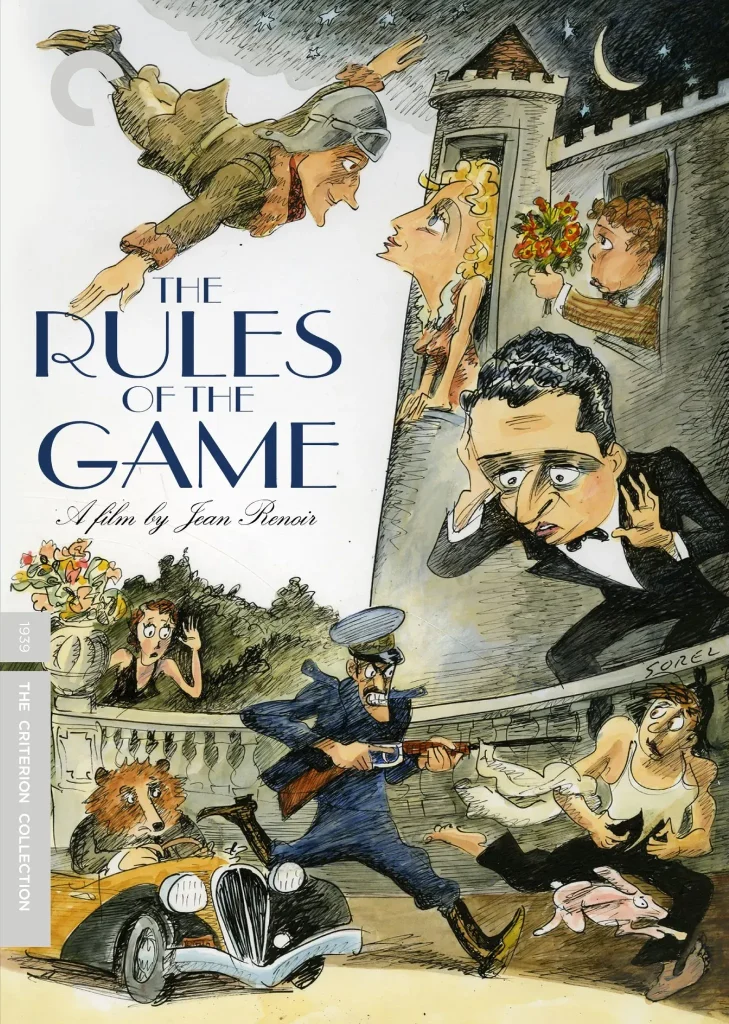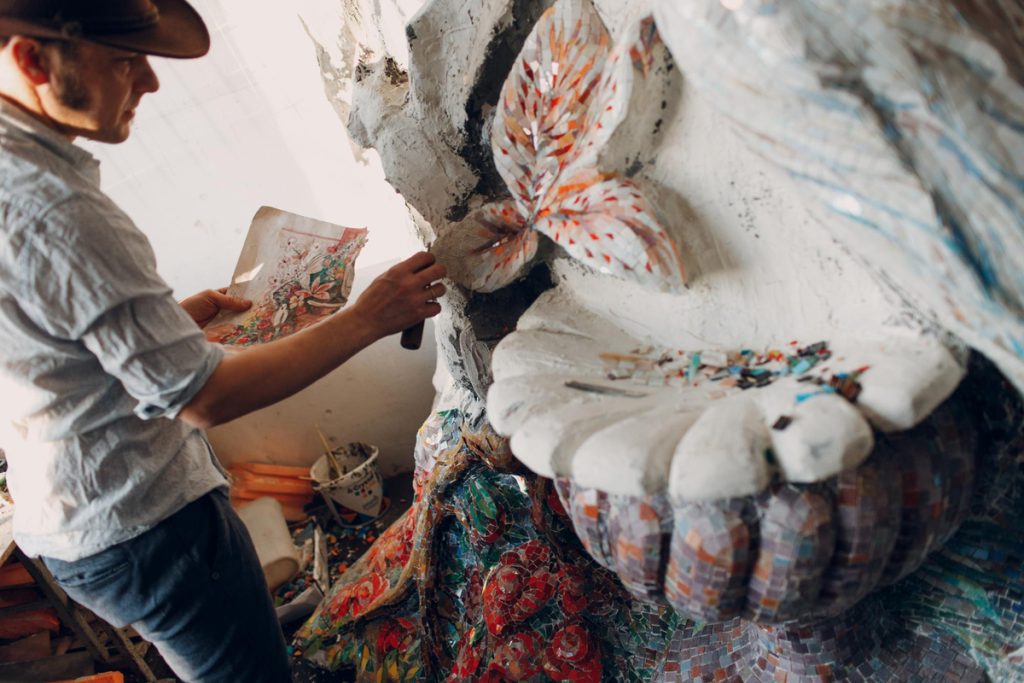The Rules of the Game, crafted by acclaimed director Jean Renoir in 1939, stands as a vivid reflection of French cinema’s capacity for political satire and social critique, juxtaposing the frivolity of high society against the backdrop of impending war. This revolutionary film intricately weaves together themes of class struggle, romantic entanglements, and the consequences of deception, all while drawing a sly parallel to Mozart’s operatic genius. The film’s audacious narrative explores the depths of human relationships with an unparalleled poetic touch, illustrating how privilege perpetuates both silence and violence. Renoir’s masterful direction culminates in a cinematic experience that captures a poignant moment in history, making The Rules of the Game a timeless piece worthy of study. As viewers engage with this masterpiece, they will uncover the complex layers of its story, punctuated by Renoir’s characteristic wit and a rich tapestry of characters.
Often heralded as a landmark of cinematic artistry, Jean Renoir’s remarkable work from 1939 resonates profoundly through its exploration of societal dynamics and interpersonal drama. This film, known for its clever blend of tragedy and comedy, reveals the undercurrents of class tensions and romantic misadventures in a rapidly changing France. Drawing inspiration from operatic narratives, particularly those influenced by Mozart, it delves into the moral ambiguities that define human nature and social constructs. The Rules of the Game serves as a crucial lens into the realities of its time, capturing the zeitgeist of a nation on the brink of upheaval. As a significant foray into political commentary masked as a farce, this film remains a critical study in the annals of film history and the evolution of cultural discourse.
The Political Satire of ‘The Rules of the Game’
Jean Renoir’s ‘The Rules of the Game’ employs brilliant political satire to critique the societal norms of late 1930s France. Through the lens of comedy and tragedy, the film explores the morally ambiguous world of the aristocracy, juxtaposing their reckless indulgence with the impending threat of war. The characters, regardless of their social standing, exemplify a profound disconnection from the reality of their times, mirroring the lack of awareness among those in power. Renoir’s sharp wit reveals the aristocracy’s complicity in the socio-political crises, ultimately framing their luxurious existence against the backdrop of rising fascism. This powerful commentary resonates particularly today, as the issues of privilege and social accountability remain relevant across the globe.
The film’s intricate narrative comprises overlapping relationships and conflicts that echo the self-deception pervasive in real-life societal elites. For instance, the character of Robert, a marquis with hidden Jewish ancestry, symbolizes the duality of privilege and vulnerability. His treatment by other characters reflects the class prejudices and anti-Semitic sentiments that were rampant during Renoir’s time. In crafting ‘The Rules of the Game’, Renoir not only presents a critique of societal norms but also an indictment on the rampant escapism and moral decay evident in French high society, making it a timeless piece of political cinema.
Moreover, Renoir artfully blends humor with dark undertones, capturing the essence of a society on the brink of collapse. The satirical elements in the film stem from the absurdity and frivolity displayed by the characters, who engage in petty pursuits while ignoring the larger, looming threats of their era. The hunting party in the film serves as a microcosm for this concept — a lavish gathering that ultimately descends into chaos as personal vendettas unravel beneath the surface. This chaotic atmosphere highlights the fragility of social order, exposing the characters’ superficial camaraderie amidst their selfish motives, reflecting a society that turns a blind eye to the realities of its impending doom.
Jean Renoir’s Legacy in French Cinema
‘The Rules of the Game’ stands as a quintessential work in Jean Renoir’s illustrious career and a landmark in French cinema. Released in 1939, the film showcases Renoir’s innovative narrative style and deep understanding of human relationships within a socio-political context. His ability to portray the complexities of class dynamics resonates with audiences even decades later, affirming his status as a master filmmaker. Renoir employs elaborate cinematography to weave together different societal strata, presenting a world rife with contradictions where the lives of the rich and the poor intersect in the most dramatic of ways. This interplay is intricately executed, underscored by LSI-rich terms such as social class, societal norms, and cultural satire, enriching the film’s thematic depth.
In addition to its complex storytelling, Renoir’s directorial prowess is evident in the film’s striking visual motifs and character development. He creates archetypes who embody the vulnerabilities and flaws of their social classes while engaging in moments of both comedy and tragedy. This approach not only entertains but also encourages viewers to reflect on their own positions within societal structures, a testament to the film’s enduring relevance. Renoir’s ability to evoke empathy and critique through his cinematic lens solidifies his influential legacy in the realms of political satire and storytelling.
The restoration of ‘The Rules of the Game’ in recent years has breathed new life into this classic, allowing modern audiences to appreciate the artistry and commentary embedded within it. As filmmakers today continue to draw inspiration from Renoir’s multi-layered narratives and character-driven stories, ‘The Rules of the Game’ stands as a blueprint in exploring the intersections of personal and political realms within cinema. The film’s commentary on privilege and power dynamics is not only a reflection of its historical context but serves as a timeless inquiry into the human condition that resonates beyond borders and generations.
Comparative Analysis: Mozart’s Influence on Cinema
Exploring the parallels between Jean Renoir’s ‘The Rules of the Game’ and Mozart’s operatic mastery reveals a profound interconnection between film and music as mediums of social critique. Much like Mozart’s ‘The Marriage of Figaro’, which intertwines personal turmoil with larger societal issues, Renoir’s film presents a tangled web of romantic entanglements, class structures, and moral dilemmas. Both works showcase intense emotional depth while employing humor and irony, making them timeless pieces of art that resonate with audiences across generations. The influence of Mozart’s operatic techniques can be felt in Renoir’s pacing, rhythm, and dramatic compositions, further enhancing the film’s portrayal of societal frivolity against a backdrop of looming catastrophe.
Renoir’s cinematic techniques, akin to Mozart’s musical arrangements, allow viewers to experience the weight of character dynamics in an engaging manner. Just as Mozart uses musical motifs to signal emotional shifts, Renoir employs visual motifs and narrative devices to evoke empathy and reflection in his audience. The dissonance between comedic elements and tragic realities in both ‘The Rules of the Game’ and ‘The Marriage of Figaro’ underscores the struggles inherent in the human experience, creating a rich tapestry of emotions that compel viewers to grapple with the social structures that govern their lives.
Furthermore, the parallels extend to character complexities within both works. In Mozart’s operas, characters often face dilemmas that challenge their moral standing, reflecting their relationships within societal frameworks. Similarly, Renoir’s characters navigate a landscape fraught with social expectations, where their desires and ethics clash against the aristocracy’s privileges. This exploration of human frailty and moral ambiguity provides an opportunity for deeper engagement, inviting audiences to consider their own societal roles. By bridging the worlds of opera and film, Renoir pays homage to the timeless influence of Mozart, revealing the continuing relevance of their shared themes in the quest for personal and social authenticity.
The Cinematic Techniques of Renoir
Jean Renoir’s ‘The Rules of the Game’ is a masterclass in cinematic techniques that enhance storytelling and thematic depth. Utilizing a combination of rich visuals, compelling dialogue, and complex character interactions, Renoir crafts an immersive experience that captivates audiences. One notable aspect of his technique is the use of deep focus cinematography, which allows for multiple layers of action to occur within a single frame. This approach not only enriches the narrative but also draws viewers into the film’s social commentary, allowing them to witness the interplay of various characters in their chaotic environment. The visual storytelling complements the film’s satirical tone, amplifying the absurdity of the aristocratic lifestyle while subtly foreshadowing the imminent socio-political unrest.
In addition to cinematography, Renoir’s deft handling of ensemble casts creates a dynamic tapestry of relationships that reflect the complexities of social hierarchies. Characters are portrayed with psychological depth, each embodying unique traits that contribute to the overall narrative. This level of character development ensures that the audience is engaged emotionally, fostering empathy for individuals entrenched in societal conflicts. By employing these techniques effectively, Renoir not only tells a captivating story but also invites viewers to reflect on the broader implications of class, privilege, and the impending crises faced by society.
Renoir’s use of dialogue also plays a pivotal role in building character relationships and advancing the narrative. The film features sharp, witty exchanges that reveal the inner workings of its characters’ minds. This clever use of language not only serves to entertain but also delivers biting social commentary, reflecting the absurdity of class pretensions and the moral failings of the upper strata. The dialogue often dances between humor and tragedy, a characteristic trait that mirrors Renoir’s own sentiments towards the society he portrays. Thus, ‘The Rules of the Game’ stands as a significant work of French cinema, showcasing Renoir’s ability to blend technical prowess with meaningful social critique.
The Restoration and Reappraisal of a Classic
The restoration of ‘The Rules of the Game’ in recent years has revived the film’s critical acclaim, allowing a new generation to experience Renoir’s artistry firsthand. This meticulous restoration aimed to recover the original visual and auditory elements that were lost in previous edits, ensuring that audiences could appreciate the film as intended. By restoring the film to its 1959 director’s cut version, viewers can once again witness the intricate narrative woven through the film’s essential details. The reappraisal prompted by this restoration has sparked renewed discussions about its social relevance and cinematic impact, elevating its status as a cornerstone of French cinema.
The restoration process has also highlighted the film’s intricate technical aspects, from cinematographic style to sound design, demonstrating how they contribute to its complex themes. Film scholars and critics alike have recognized the importance of preserving such significant works in film history, as they serve as cultural artifacts that reflect the societal issues of their time. By bringing ‘The Rules of the Game’ back into the spotlight, the restoration invites deeper examination of Renoir’s critique of French society while reminding contemporary audiences of the enduring relevance of its themes.
Furthermore, the resurgence in popularity of ‘The Rules of the Game’ is not solely due to its aesthetic qualities but also its political commentary, sparking conversations about privilege, exploitation, and social responsibility. The film’s exploration of characters frantically navigating their own desires amidst societal pressures resonates with modern viewers grappling with similar issues. This reappraisal positions Renoir not just as a filmmaker of his time but as a visionary whose work transcends epochs. As such, ‘The Rules of the Game’ remains a critical lens through which we can examine our current socio-political climate, making it a timeless classic that will continue to influence future generations.
Frequently Asked Questions
How does Jean Renoir’s film ‘The Rules of the Game’ reflect political satire in French cinema?
Jean Renoir’s ‘The Rules of the Game’ serves as a sharp political satire by critiquing the frivolity and moral decay of French society in the face of impending war and authoritarianism. Released in 1939, the film uses intricate characters and complex romantic entanglements to unmask the hypocrisy of both the aristocracy and bourgeoisie, making it a powerful commentary on social injustice and privilege.
What is the connection between ‘The Rules of the Game’ and Mozart’s influence in cinema?
The influence of Mozart, particularly in terms of the operatic structure and themes of ‘The Marriage of Figaro,’ is evident in ‘The Rules of the Game.’ Renoir blends comedy and tragedy, much like Mozart’s operas, showcasing a whirlwind of human emotions and societal conflicts, which highlights the absurdity of class divisions and personal vices within French society.
In what ways does ‘The Rules of the Game’ depict the complexities of social relationships?
‘The Rules of the Game’ intricately portrays social relationships through its layered narrative, where overlapping personal interests and societal expectations unravel. The interactions among various characters, from the aristocracy to the hired help, reveal profound insights into human behavior and the consequences of moral compromise, encapsulating the societal tensions of 1930s France.
How did the historical context influence the themes explored in ‘The Rules of the Game’?
The historical context of ‘The Rules of the Game’—set in the late 1930s—greatly influenced its themes of impending disaster and moral complicity. Released shortly before World War II, the film critiques the denial and privilege of French society, subtly foreboding the catastrophic consequences of its political landscape, thus serving as both a social commentary and a historical testament.
What impact did the censorship and release history of ‘The Rules of the Game’ have on its reception?
The censorship and tumultuous release history of ‘The Rules of the Game’ affected its initial reception negatively; many right-wing audiences rejected its critique of privilege and the nuanced portrayal of antisemitism in French society. Over time, however, particularly after its restoration, the film gained recognition for its revolutionary artistry and compelling political critique, solidifying its status as a classic.
| Key Points |
|---|
| Jean Renoir’s “The Rules of the Game” critiques French society amid the rise of fascism and war. |
| The film reflects on crisscrossing romantic entanglements within high society and among the help. |
| Renoir draws parallels between the film and Mozart’s operas, especially in social critique and complex narratives. |
| “The Rules of the Game” addresses themes of social order, privilege, and the complicity of the upper classes in societal issues. |
| The film’s release history reveals the censorship and political nuances of France during and after World War II. |
| Renoir’s characters embody psychological depth and complexity, enriching the narrative with a satirical lens. |
| “The Rules of the Game” was initially met with poor reception but later recognized for its revolutionary critique of society. |
| The film combines various cinematic styles and features sharp, aphoristic dialogue that enhances its thematic depth. |
| The character of Octave serves as a self-portrait of Renoir, embodying the film’s exploration of art and societal critique. |
Summary
The Rules of the Game paints a vivid tableau of French society amid the pre-war turmoil of the late 1930s, challenging viewers to confront the complex interplay of class, privilege, and social dynamics. Through its intricate narrative and rich character portrayals, Renoir crafts a film that transcends mere entertainment, offering a keen social commentary that resonates deeply with contemporary audiences. Even decades later, its ability to intertwine poignant satire with emotional depth ensures that The Rules of the Game retains its status as a cinematic masterpiece.



